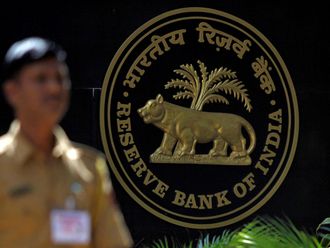
New Delhi: India’s Supreme Court has upheld the legality of the government’s Aadhaar system, the world’s largest biometric database containing the personal information of more than a billion Indians.
A five-judge bench of India’s top court put some limits on how Aadhaar information could be used, but said the benefits of the system outweighed any risks to privacy.
The decision on Wednesday settles several major questions that have hung over the Aadhaar in the decade since it was first proposed by the previous Congress government and then vastly expanded by current Prime Minister Narendra Modi.
The court in January began hearing a clutch of 27 cases challenging the constitutional validity of the system in hearings that stretched for 38 days, eventually becoming the second-longest case ever presented before the highest court.
The system, which now contains biometric and other personal information of more than 1.13 billon Indians, has spawned six years of legal challenges and been a lightning rod for debates about privacy, data sovereignty and digital governance in what will soon be the world’s most populated country.
Advocates say it has granted hundreds of millions of Indians a unique identity document in a country where only 58 per cent of births are registered. They envision a future where Aadhaar forms the core of a digital identity that could eventually include every Indian’s health records, credit scores, e-signatures, criminal backgrounds, welfare entitlements and other data.
Data of billions
Aadhaar, a Hindi word meaning “foundation”, has already been used to give hundreds of millions of Indians their first bank account, proponents say — with another 190 million people still to go. The data could one day also serve as collateral for loans, bringing hundreds of millions of people into the financial system, as well as streamlining the delivery of welfare services in a country where about 40 per cent of social payments are lost to corruption, leakage or middlemen, according to a 2015 study.
But critics have raised concerns about the possibility of breaches in a database that could eventually store enough information to create a comprehensive profile of a person’s lifestyle, purchases, friends, financial habits, and more.
Indian media and digital security researchers have documented instances of Aadhaar records apparently being breached both by sophisticated hacks — as in the most recent case involving a patch that reportedly weakened security measures in the software designed to enrol new users — or by small-time fraudsters who have reportedly sold access to Aadhaar numbers for as little as $8 (Dh29).
In every case of an alleged breach, the Unique Identification Authority of India (UIDAI), which administers the system, has argued the leaked information — including birth dates, parents’ names or Aadhaar numbers — is not secret and that the biometric data of Indians, meaning their iris scans and fingerprints, have never been compromised.
Opponents have also objected to government policies that make the Aadhaar card mandatory to access welfare and social services schemes, including for free midday meals at schools and subsidies for rice and other staples.
They claim at least 25 people have died in the past four years because glitches in the system meant they were cut off from rations, health care or pension payments, including two in the past week.
“If Aadhaar works really well, people just receive the same benefits as before,” says Reetika Kheera, an Indian economist and social scientist. “It is pain without gain.”
Registering with Aadhaar is not mandatory but is becoming increasingly necessary to access government services.
Critics had succeeded in persuading the Indian Supreme Court to temporarily freeze a government order that bank accounts and mobile phone connections also require an Aadhaar record.
Legal challenges to Aadhaar last year led the Supreme Court to convene a bench to examine the question of whether Indians have a right to privacy.
The court found in a landmark unanimous judgement that such a right existed, a decision whose ramifications included the decriminalisation of consensual gay sex earlier this month.
What is Aadhaar?
■ Aadhaar (meaning foundation in Hindi) is a 12-digit unique identity number that can be obtained by citizens of India, based on their biometric and demographic data.
■ The data is collected by the Unique Identification Authority of Identity (UIDAI), a statutory authority established by the Government of India in 2009.
■ It is meant for Indian citizens aged 18 and above.
■ The Aadhaar card was launched by the Manmohan Singh-led United Progressive Alliance government in 2012.
■ The National Democratic Alliance government pushed to link the Aadhaar number with phone numbers, bank accounts, PAN cards and services ranging from school admission forms to pension benefits.
What was it originally designed to do?
The Aadhaar was originally mandatory for direct transfer of subsidies and benefits, and used in checking tax evasion.
What was the issue in court?
Critics argued that, by collecting demographic and biometric data, Aadhaar encroached on citizens’ right to privacy.
What did the court say?
■ The Aadhaar programme has huge benefits in delivering welfare efficiently.
■ But biometric data cannot be used by private entities such as banks or mobile phone operators for authentication purposes.
■ No mandatory linkage of phone numbers with Aadhaar.
■ The government must ensure no illegal migrants are issued Aadhaar cards.
■ Private companies cannot ask for Aadhaar.
Do NRIs need an Aadhaar card?
No. A person who has lived in India for 182 days can enrol for Aadhaar.
What needs Aadhaar linking?
1. It is mandatory to link the PAN card with Aadhaar.
2. Aadhaar is compulsory for filing income tax returns.
3. It is necessary for availing oneself of welfare schemes and subsidies given by the government.
What services do not need to be linked to Aadhaar?
1. For opening a bank account — the court struck down Section 57, which allowed private companies to use Aadhaar data.
2. As a result, other private entities like telecom and e-commerce firms are now barred from asking for Aadhaar. It is also not needed for getting a SIM card or shopping online.
3. It is not needed for admission in schools. Aadhaar is also not compulsory to sit for CBSE and NEET exams.
— By Nilima Pathak, Correspondent












